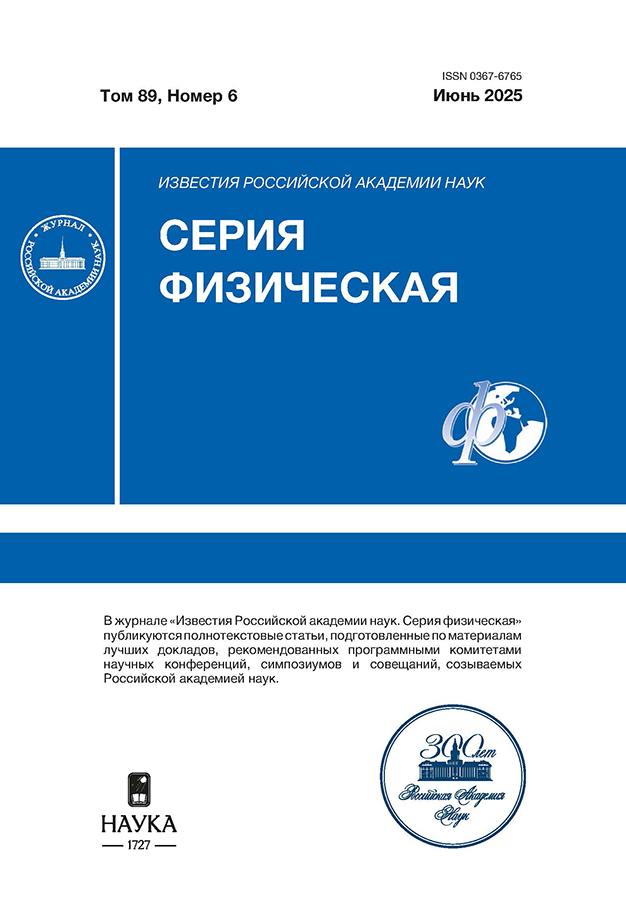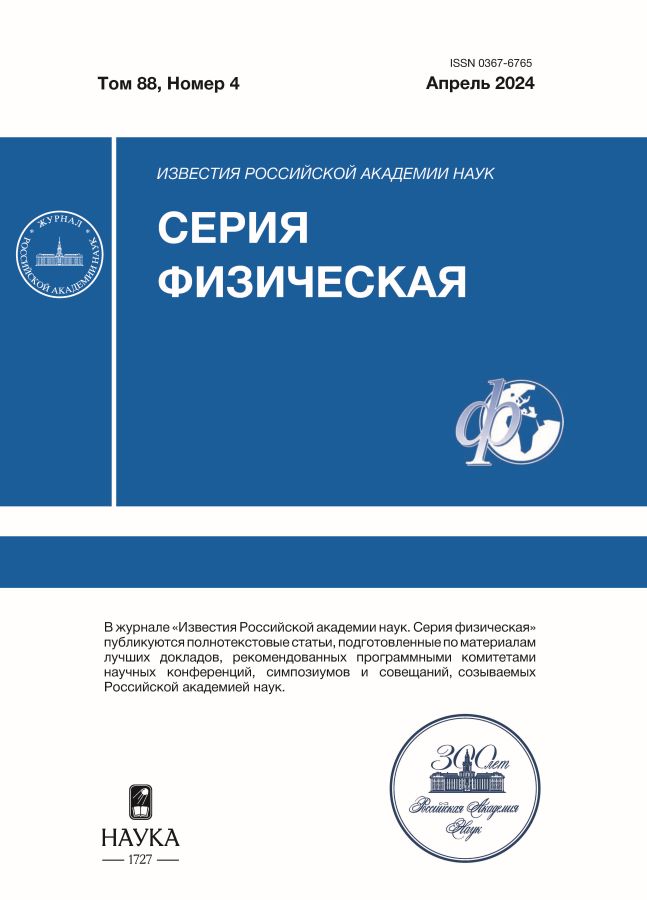Исследование физических свойств пьезоэлектрического композита поливинилиденфторид – цирконат-титанат свинца
- Авторы: Савин В.В.1,2, Керученко М.А.1,2,3, Ершов П.А.1, Воронцов П.А.1, Игнатов А.А.1, Родионова В.В.1
-
Учреждения:
- Федеральное государственное автономное образовательное учреждение высшего образования “Балтийский федеральный университет имени Иммануила Канта”
- Государственное бюджетное учреждение Калининградской области нетиповая образовательная организация “Центр развития одаренных детей”
- Муниципальное автономное общеобразовательное учреждение города Калининграда лицей № 23
- Выпуск: Том 88, № 4 (2024)
- Страницы: 668-672
- Раздел: Магнитные явления и умные композитные материалы
- URL: https://cijournal.ru/0367-6765/article/view/654715
- DOI: https://doi.org/10.31857/S0367676524040209
- EDN: https://elibrary.ru/QGRTVM
- ID: 654715
Цитировать
Полный текст
Аннотация
Изучено влияние процентного содержания микрочастиц цирконат-титаната свинца в композитном материале на основе поливинилиденфторида на его механические, пьезоэлектрические и структурные свойства. Обнаружено, что добавление 10% частиц цирконат-титаната свинца приводит к усилению пьезоэлектрического отклика вследствие резкого роста степени кристалличности полимера для этой концентрации при сохранении предельных напряжений материала в диапазоне приемлемом для реализации датчиков механического воздействия.
Полный текст
Об авторах
В. В. Савин
Федеральное государственное автономное образовательное учреждение высшего образования “Балтийский федеральный университет имени Иммануила Канта”; Государственное бюджетное учреждение Калининградской области нетиповая образовательная организация “Центр развития одаренных детей”
Автор, ответственный за переписку.
Email: savin_vv@bk.ru
Россия, Калининград; Ушаково
М. А. Керученко
Федеральное государственное автономное образовательное учреждение высшего образования “Балтийский федеральный университет имени Иммануила Канта”; Государственное бюджетное учреждение Калининградской области нетиповая образовательная организация “Центр развития одаренных детей”; Муниципальное автономное общеобразовательное учреждение города Калининграда лицей № 23
Email: savin_vv@bk.ru
Россия, Калининград; Ушаково; Калининград
П. А. Ершов
Федеральное государственное автономное образовательное учреждение высшего образования “Балтийский федеральный университет имени Иммануила Канта”
Email: savin_vv@bk.ru
Россия, Калининград
П. А. Воронцов
Федеральное государственное автономное образовательное учреждение высшего образования “Балтийский федеральный университет имени Иммануила Канта”
Email: savin_vv@bk.ru
Россия, Калининград
А. А. Игнатов
Федеральное государственное автономное образовательное учреждение высшего образования “Балтийский федеральный университет имени Иммануила Канта”
Email: savin_vv@bk.ru
Россия, Калининград
В. В. Родионова
Федеральное государственное автономное образовательное учреждение высшего образования “Балтийский федеральный университет имени Иммануила Канта”
Email: savin_vv@bk.ru
Россия, Калининград
Список литературы
- Omelyanchik A., Antipova V., Gritsenko C. et al. // Nanomaterials. 2021. V. 5. No. 11. P. 1154.
- Xia W., Zhang Z. // IET Nanodielectr. 2018. V. 1. No. 1. P. 17.
- Du X., Zhou Z., Zhang Z. et al. // J. Adv. Ceram. 2022. V. 11. No. 2. P. 331.
- Pei J., Zhao Z., Li X. et al. // Mater. Exp. 2017. No. 3 (7). P. 180.
- Yuan C.X., Zhang C., Xiao et al. // Ceram. Int. 2023. V. 49. No. 17A. P. 28474.
- Asghar A.H., Qaseem A., Alam W., Akhtar M. // Proc. IBCAST 2022. (Murree Hills, 2022). P. 1.
- Li S., Bhalla A., Newnham R. Cross L. // Mater. Lett. 1993. V. 1–2. No. 17. P. 21.
- Sobolev K., Kolesnikova V., Omelyanchik A. et al. // Polymers. 2022. V. 14. P. 4807.
- Maccone P., Brinati G., Arcella V. // Polymer Eng. Sci. 2000. V. 40. No. 3. P. 761.
- Zhang Y., Xue D., Wu H. et al. // Acta Mater. 2014. V. 71. P. 176.
- Janakiraman S., Surendran A., Ghosh S. et al. // Solid State Ion. 2016. V. 292. No. 9. P. 130.
Дополнительные файлы
















